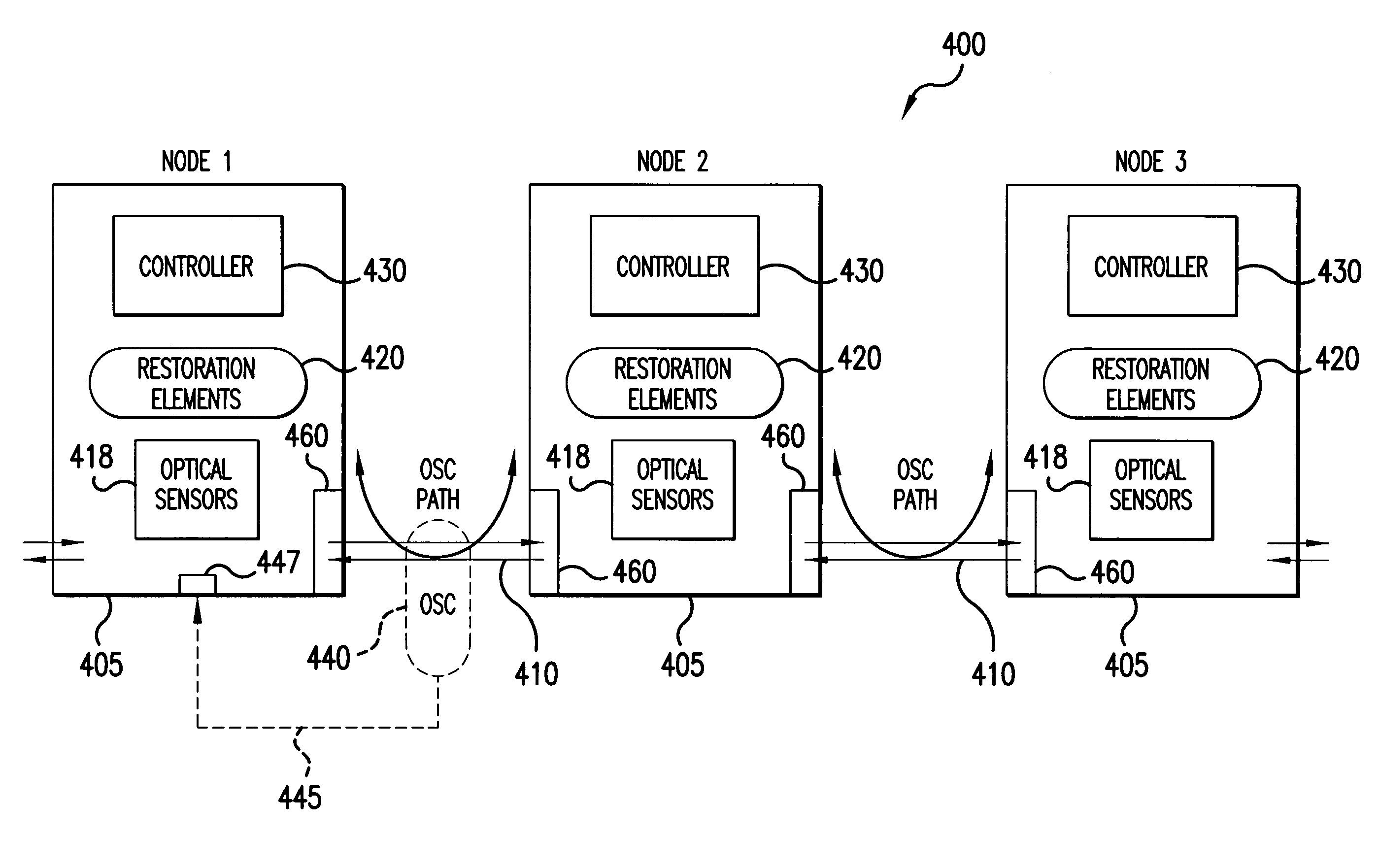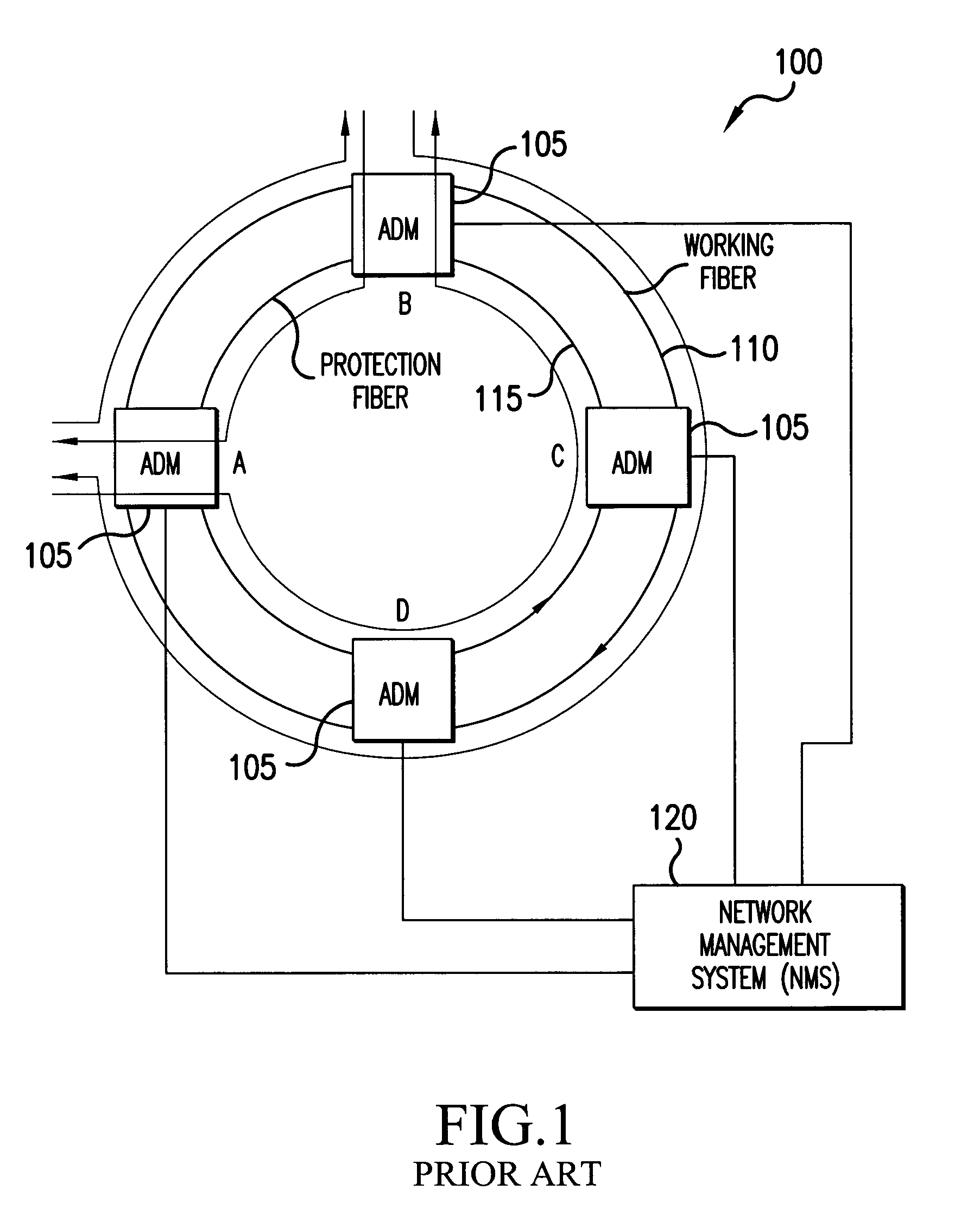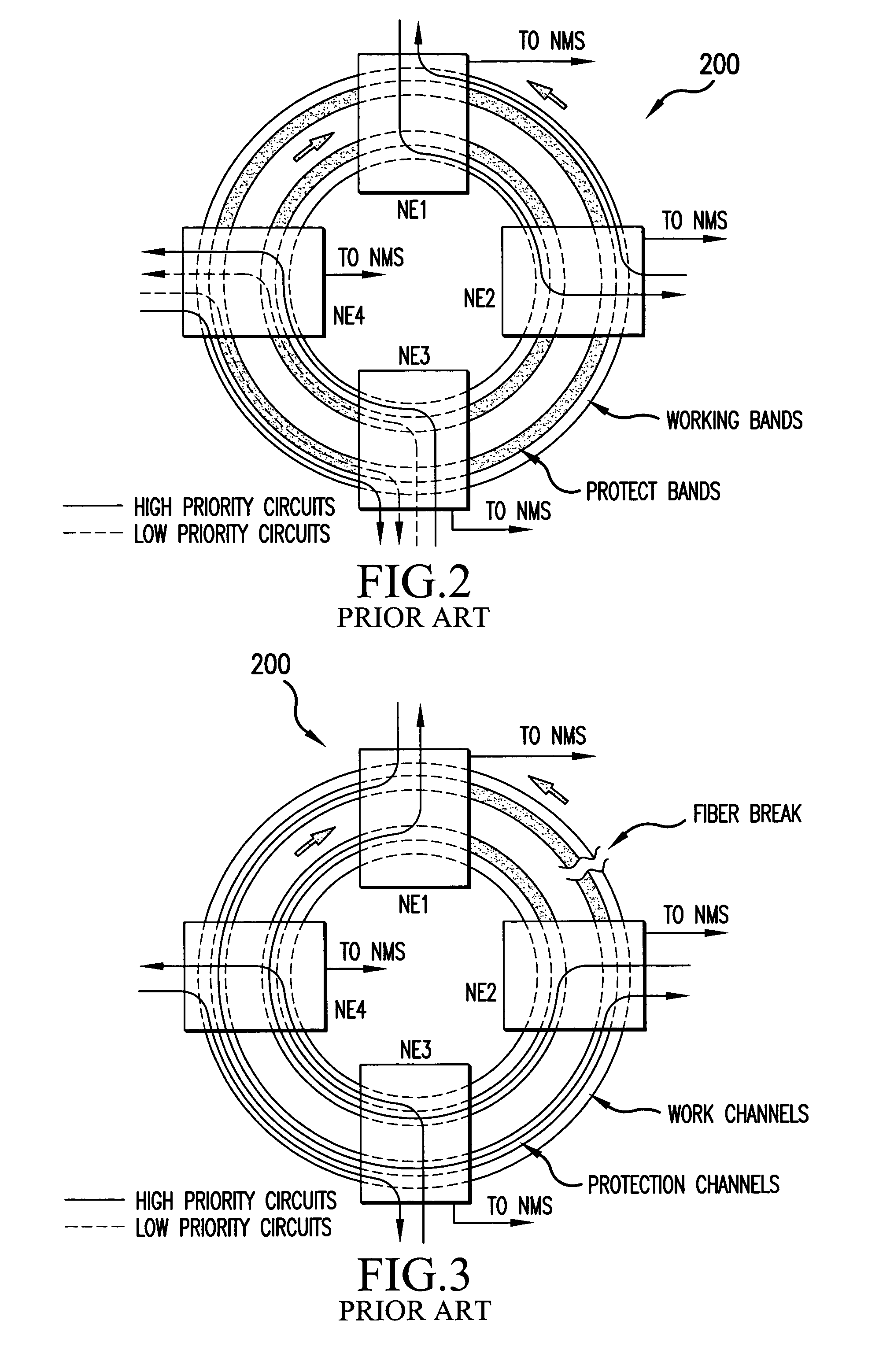Fault detection and isolation in an optical network
a fault detection and fault isolation technology, applied in the field of fault detection and fault isolation in optical networks, can solve the problems of optical network failure, loss of huge quantities of information, and inability to transmit light between nodes,
- Summary
- Abstract
- Description
- Claims
- Application Information
AI Technical Summary
Benefits of technology
Problems solved by technology
Method used
Image
Examples
Embodiment Construction
[0032]The figures depict a preferred embodiment of the present invention for purposes of illustration only. One of skill in the art will readily recognize from the following discussion that alternative embodiments of the structures and methods disclosed herein may be employed without departing from the principles of the claimed invention.
[0033]FIG. 4 is a block diagram of a portion of an optical network 400 illustrating some of the general principles of the present invention. For the purposes of illustration many conventional elements used in optical networks are omitted. It will also be understood that optical network 400 may be part of a larger chain, branched chain, mesh, or ring network. A plurality of network optical nodes 405 are shown coupled by fiber spans 410. The fiber spans 410 may comprise one or more optical fiber lines that include all of the potential optical channel data links between neighboring nodes for communicating an optical datastream. For the purposes of illu...
PUM
 Login to View More
Login to View More Abstract
Description
Claims
Application Information
 Login to View More
Login to View More - R&D
- Intellectual Property
- Life Sciences
- Materials
- Tech Scout
- Unparalleled Data Quality
- Higher Quality Content
- 60% Fewer Hallucinations
Browse by: Latest US Patents, China's latest patents, Technical Efficacy Thesaurus, Application Domain, Technology Topic, Popular Technical Reports.
© 2025 PatSnap. All rights reserved.Legal|Privacy policy|Modern Slavery Act Transparency Statement|Sitemap|About US| Contact US: help@patsnap.com



